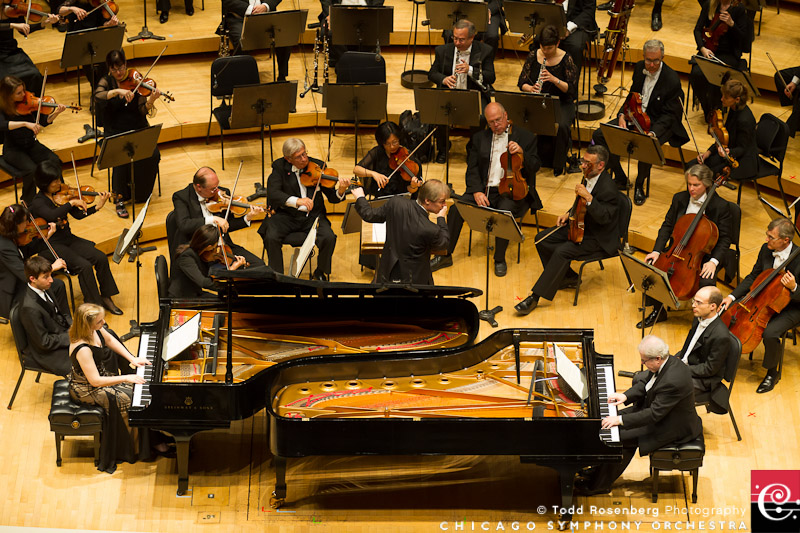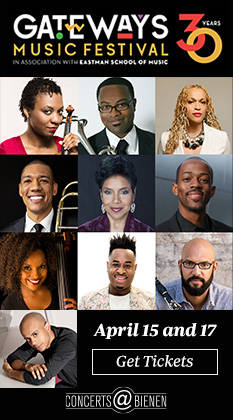CSO’s “Keys to the City” festival opens with a mixed panoply of pianists

The NATO summit and downtown protests have concluded, but it was still not business as usual Wednesday night for the Chicago Symphony Orchestra. Thousands of demonstrating teachers converged around Symphony Center with a concomitant police presence and street closures. Nonetheless, the opening of the CSO’s “Keys to the City” piano festival, led by David Robertson, went on as scheduled.
Earlier in the day as a prelude to the opening of the three-week festival, eleven pianos had been set up in strategic locations throughout the city, and festival curator, host and participant Emanuel Ax made an appearance playing about half of them.
If one or two pianists are good, then four pianists are even better seemed to be the concept behind the unusual presentation of Mozart’s Concerto for Two Pianos K. 365. As Ax noted before the piece commenced, Orli Shaham, the only female soloist, would take the lead piano role that Mozart wrote for his sister Nannerl, leaving the remaining three male pianists to join her in one movement each.
The first movement was the most balanced of the three as Shaham and Benjamin Hochman made much of the call-and-response sections and blended beautifully during the duet sections.
When Ax replaced Hochman for the Andante, the difference in tone quality between Shaham and Ax was initially jarring, yet Ax’s ability to project a full tone even at the softest dynamic level was exquisite, his delicate phrases imbued with Mozartean charm. Orion Weiss took the second part for the finale, and did so in a distinctively percussive fashion that seemed well suited to the build-up of the movement even if he proved a more tentative partner for Shaham.
It has become increasingly fashionable to have a jazz pianist serve as soloist in Gershwin’s Rhapsody in Blue with the idea that a propensity for jazz will offer a more authentic performance, and, like Gershwin himself, a jazz artist can improvise more convincingly in the idiom.
Cyrus Chestnut certainly fits the bill and offered some interesting free-form harmonic and rhythmic ideas of his own, particularly during the solo passages and cadenza.
But Chestnut was unable to generate enough power to cut through the full orchestra. From his entrance the soloist was barely audible through the wash of orchestral sound. The problem increased as the piece moved to a climax that crucially depends on a soloist that can be heard — here the performance often came across as Music Minus One.
Robertson, for his part, did his best to keep the dynamic level of the orchestra restrained and frequently turned his head to see if Chestnut was still with him, which only the movement of his hands, or lack thereof, revealed except when the piano was fully exposed. Also, considering the choice of a jazz musician as soloist, it was an odd decision to perform the work with full orchestra rather than the reduced forces of the original version.
After a National Anthem conducted by CSO governing member Dr. Edward L. Applebaum — the winner of a “Conduct the CSO” auction prize — the festival opened with the orchestral version of Ravel’s Ma mère l’oye (Mother Goose) originally written for piano duet.
Although the required assorted battery of percussion and additional winds were employed, the performance used the reduced string configuration employed for the Mozart concerto, which often left the strings sounding a bit thin and unbalanced. Nonetheless, the playing was evocative throughout, particularly John Bruce Yeh’s delicate clarinet portrayal of “Beauty” and the “Beast” response supplied by contrabassoonist Susan Nigro.
The concert also concluded with Ravel, Robertson leading the full orchestra in a rousing and playfully pliable rendition of La valse that rode the perfect balance between the raucous and restrained.
Posted in Performances




